| View previous topic :: View next topic |
| Author |
Message |
hiepphotog
Joined: 09 Sep 2010
Posts: 30
|
 Posted: Fri Mar 20, 2015 3:07 pm Post subject: Kolari A7 Mod - Drastic Improvement on Legacy and M-mount Posted: Fri Mar 20, 2015 3:07 pm Post subject: Kolari A7 Mod - Drastic Improvement on Legacy and M-mount |
 |
|
hiepphotog wrote:
My A7s.KMod is finally here! 5-week wait seems like forever (the normal turn-around is 1-1.5-week, I chose to wait for the arrival of this Mark 2 glass). It is equipped with the Mark 2 glass with thinner profile (same thickness as the M9) and humidity-resistant feature. The glass, however, has the same transmission property as the previous one. I just paraphrased what Ilija gave me. Disclaimer: I'm not associated with KolariVision and I paid in full for this mod. I just like the product and service and I feel it would be beneficial for many here on this forum.
So instead of selling your greatly depreciated A7 (R/S) camera, you can send it in for the mod and get a total different camera for your legacy (any film-designed lens) and M-mount. Link to the mod: http://kolarivision.com/thinfilterconversion.html
Let's get the test method out of the way first. I have both the normal A7s and modded A7s. I used the Jobu Algonquin tripod (Gitzo and RRS Series 4,5 equivalent) together with the Sunwayfoto XB-44DL head (low profile tripod head to improve stability). There was a very light breeze but I am confident that this set-up would be able to handle it so I just shot away. I used IR remote to eliminate any possible user-induced vibration (typical with the wired remote).
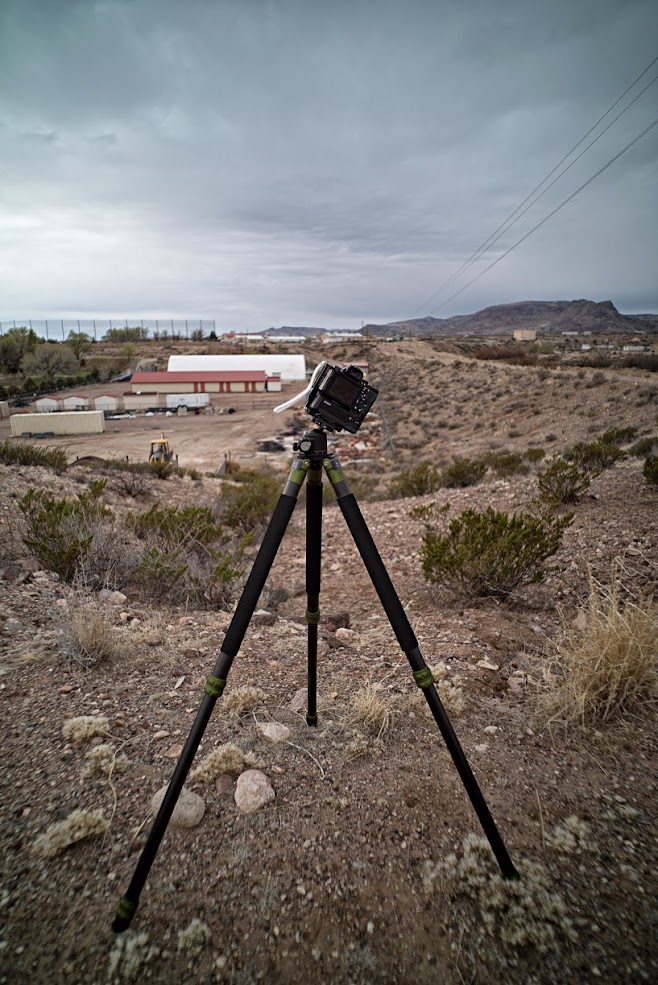
To maintain the same framing during the test, I used the battery grip. So I just simply and carefully detach/attach the camera body from/to the grip. I believe the framing was maintained as consistently as possible. Both cameras' WB was set at AWB mode, so there was a different in WB (more cyan for the normal and magenta for the modded). I left it there on purpose for easy ID and to see the effect of changing the filter. There was about 0.5 stop difference in exposure between the two cameras (the normal one was a bit under-exposed). I did not normalize the exposure since I don't believe the lighting shifted at all. It is an overcast day today. Any discrepancy was just the different intrinsic properties between the two cams. There is no additional sharpening. Vignette is corrected (100 amount, 0 Midpoint).
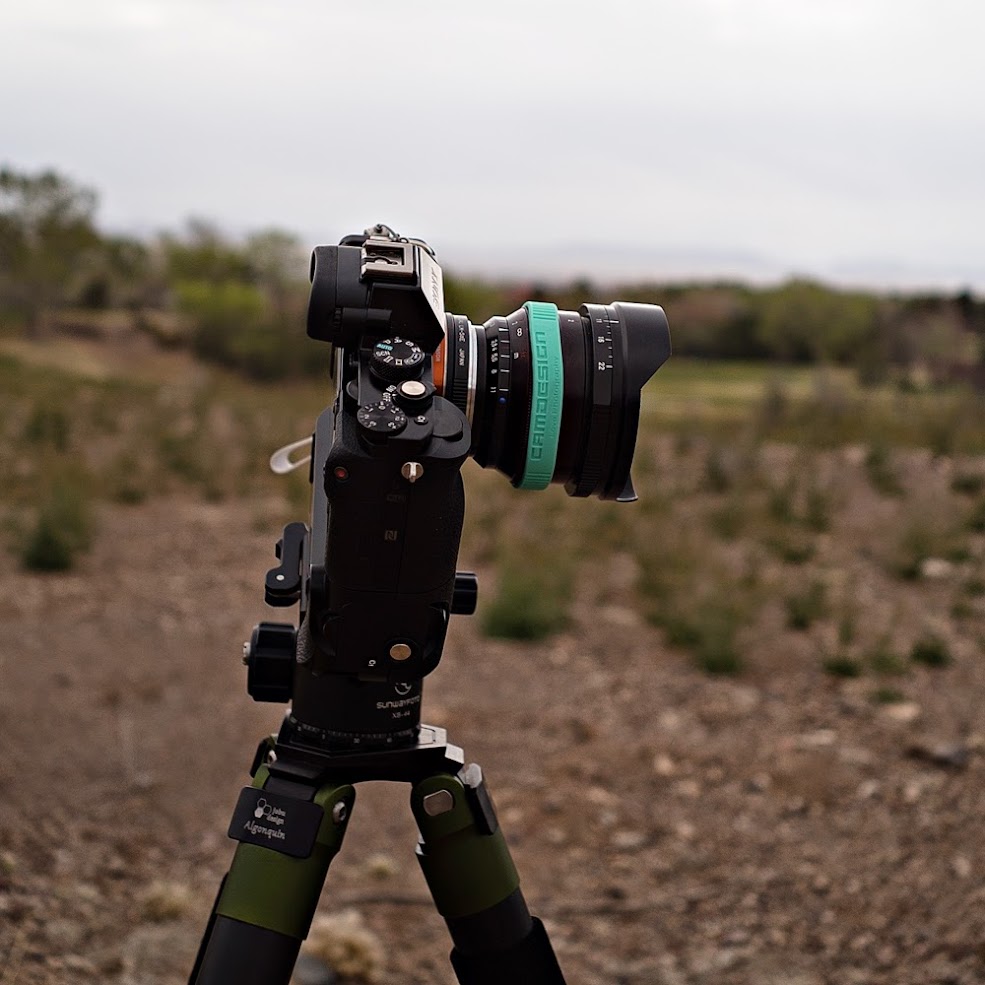
This is with the Zeiss Distagon ZM 15 f/2.8. I shot two aperture-series tests for each camera. I include full-res JPEGs at the end of this post.
The first set is to simply study the improvement as-is without any DOF and field curvature optimization.
Center: I don't see much difference in the center except for a slightly sharper and more moire/false-color with the modded A7s. This is understandable since the modded A7s doesn't have AA filter. Therefore, I just show the f/4 comparison here.
Center f/4 Comparison (Left - Modded, Right - Normal)
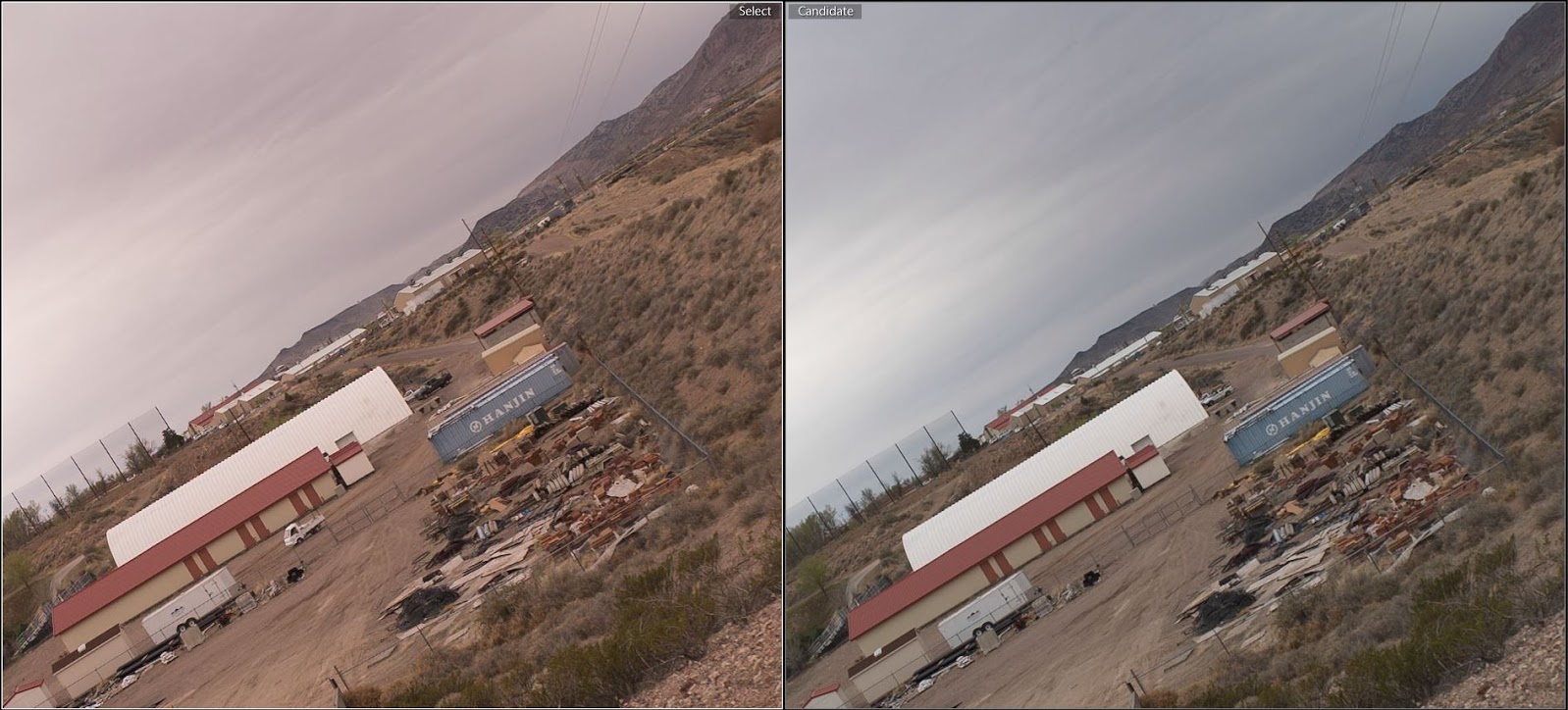
Corners: This is where things get exciting.
The order is the same as above, Left - Modded, Right - Normal
f/2.8

f/4.0
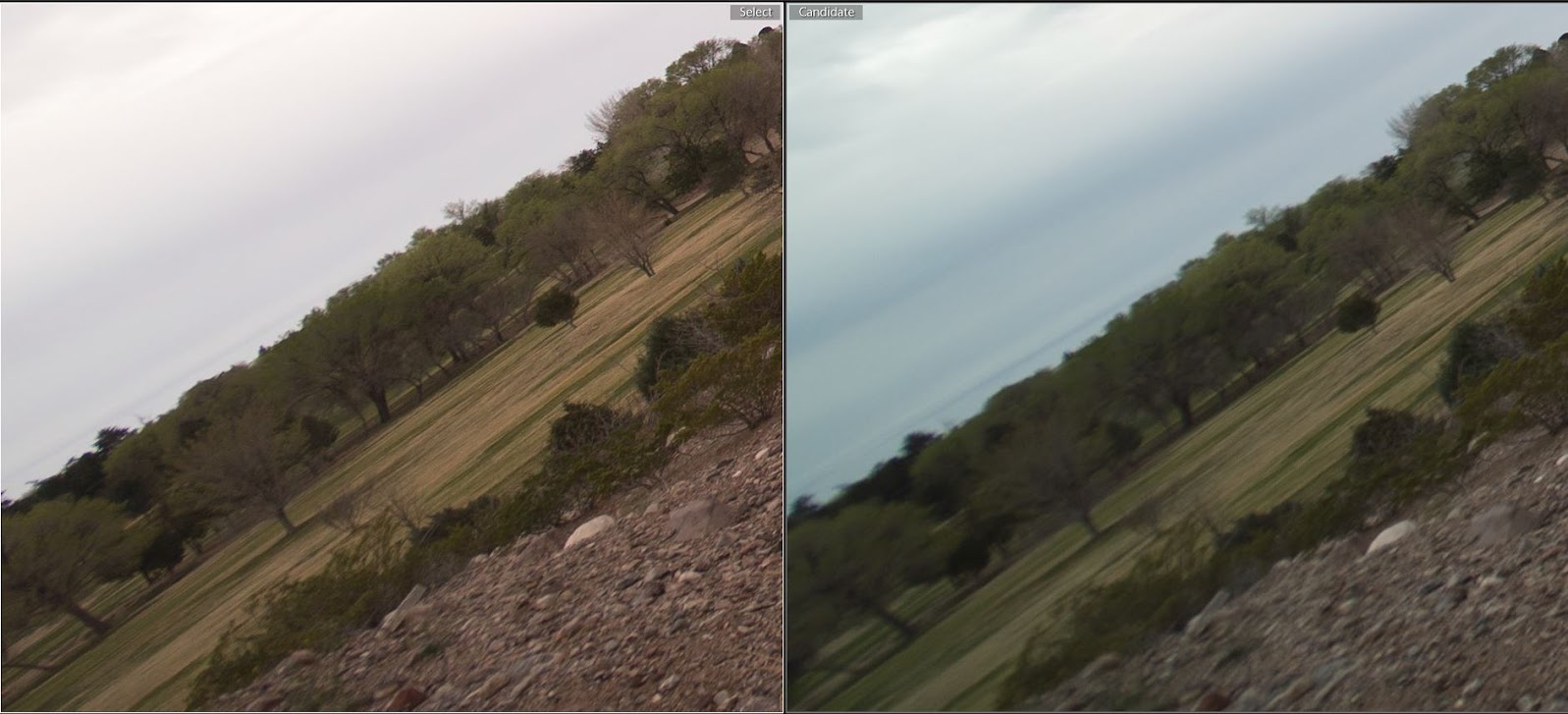
f/5.6

f/8.0
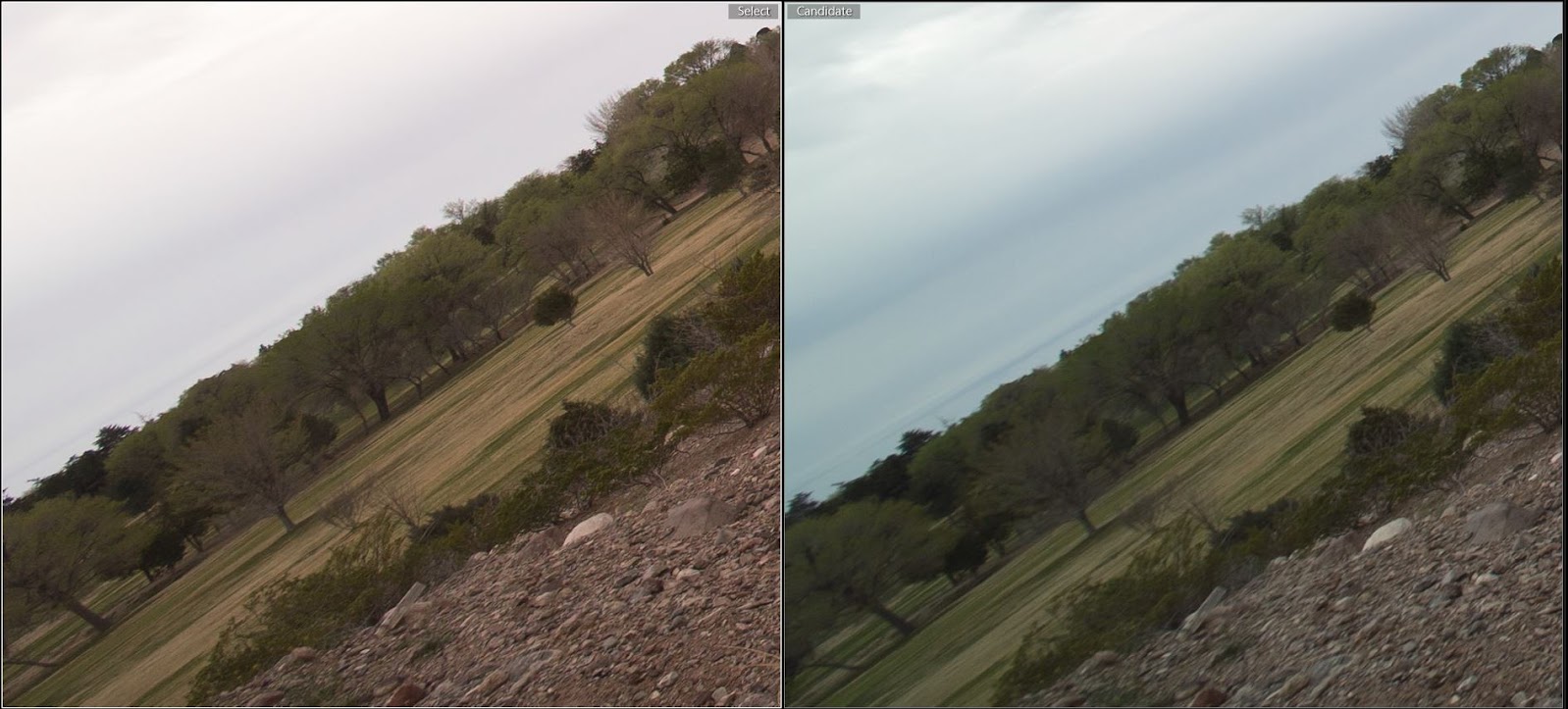
This is the second set. The purpose is to find the optimized performance. In Lloyd's test, he mentioned about the extended DOF (i.e. thicker DOF) with the modded camera. Interesting point that I have not seen mentioned anywhere else. With this premise, I took another series with the focus at the corners. I hope the extended DOF would give me a sharp corner-to-corner picture at f/5.6 instead of f/8 or f/11 (to avoid diffraction).
Anyway, the normal A7s with its extremely curved field toward the corners would be useless for this method (only works around f/11). Nonetheless, I do include the results in the rar file. What I am showing right here is the difference between placing the focus at the center vs. corners.
Center: Left - Corners Focus, Right - Center Focus
f/2.8
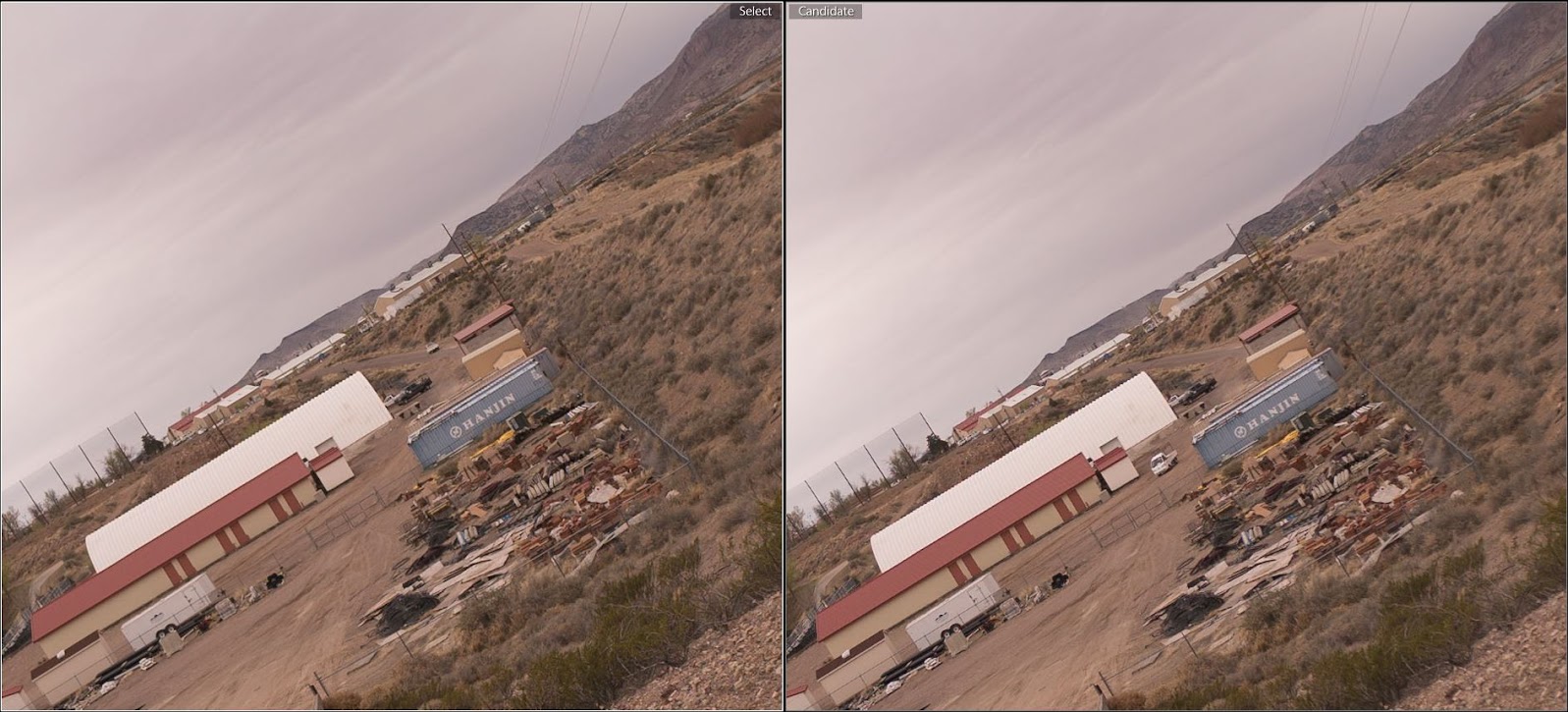
f/4.0
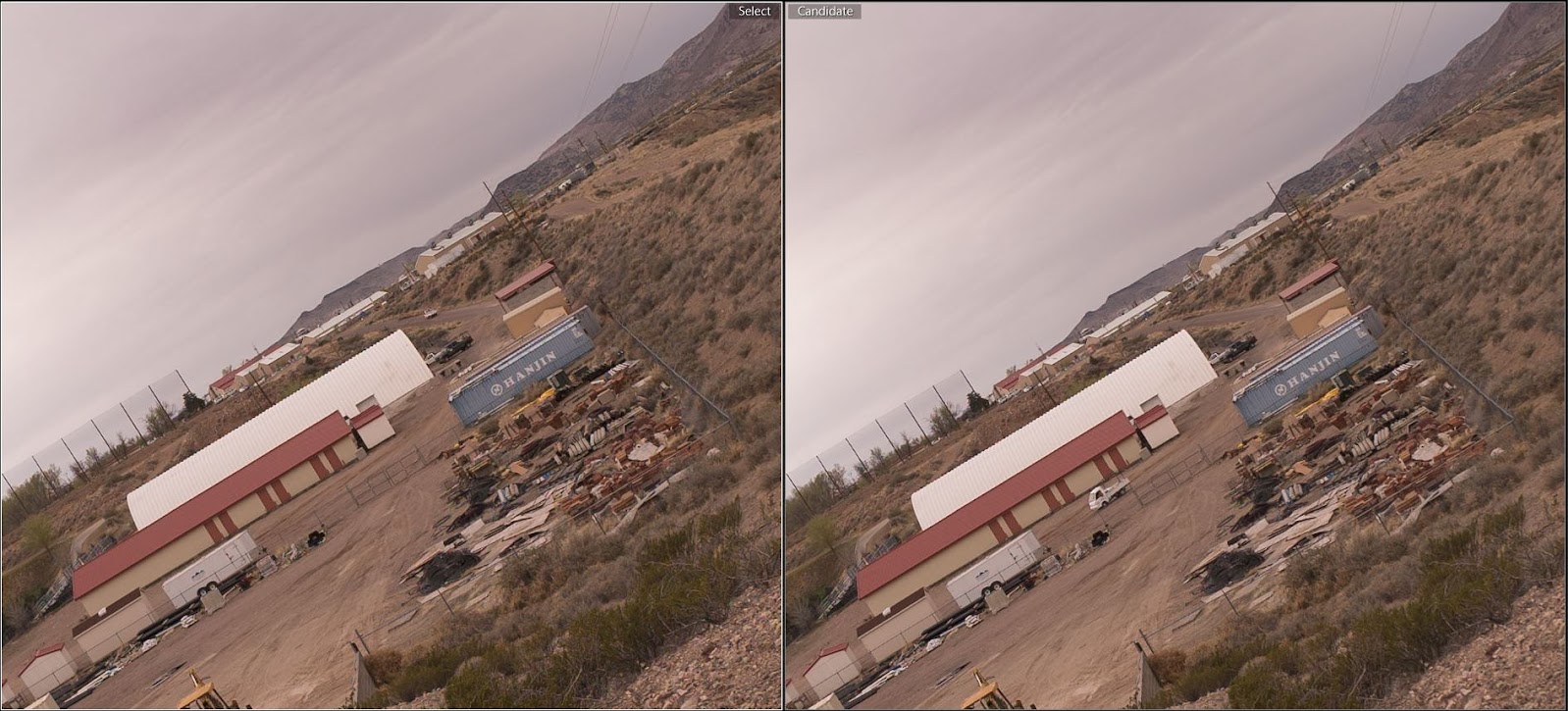
f/5.6
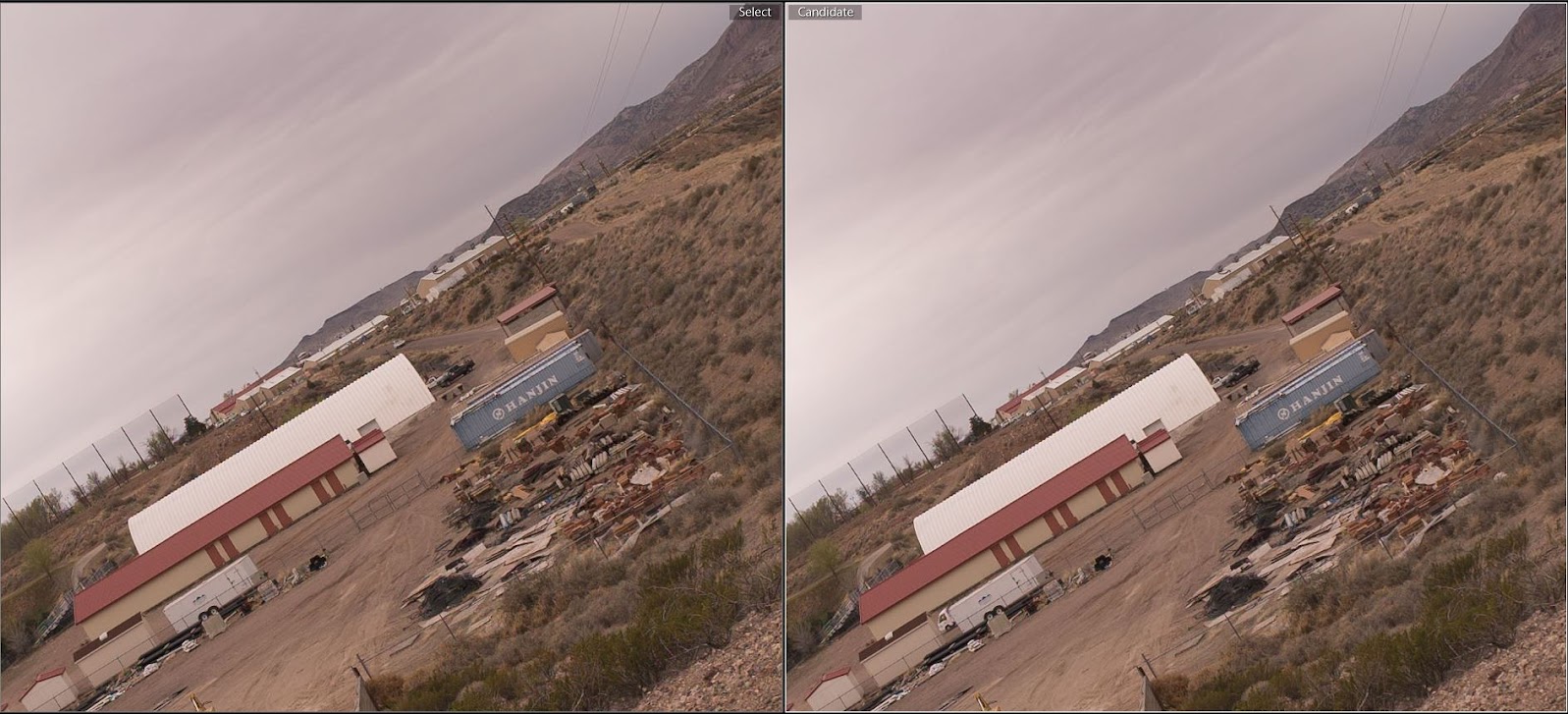
f/8.0
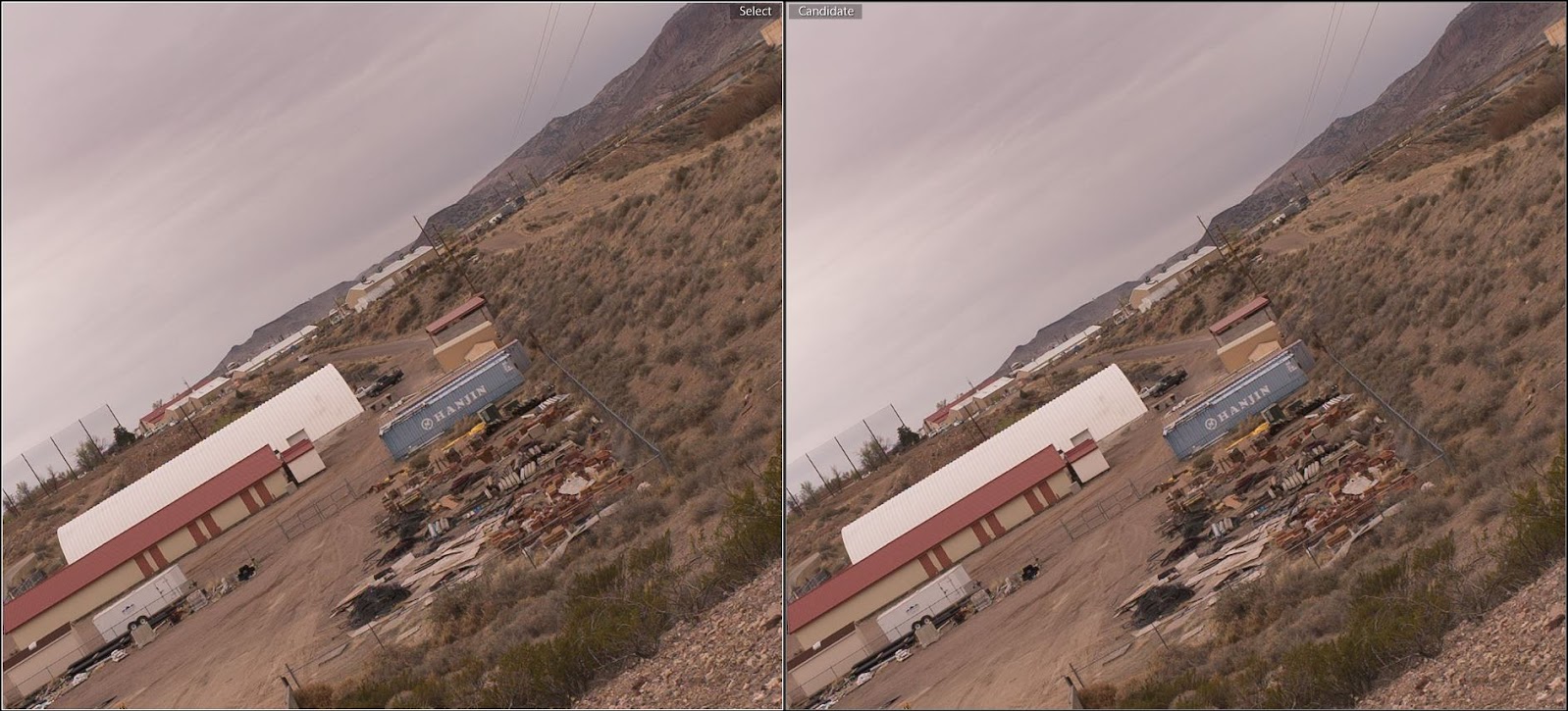
Corner: Left - Corners Focus, Right - Center Focus
f/2.8
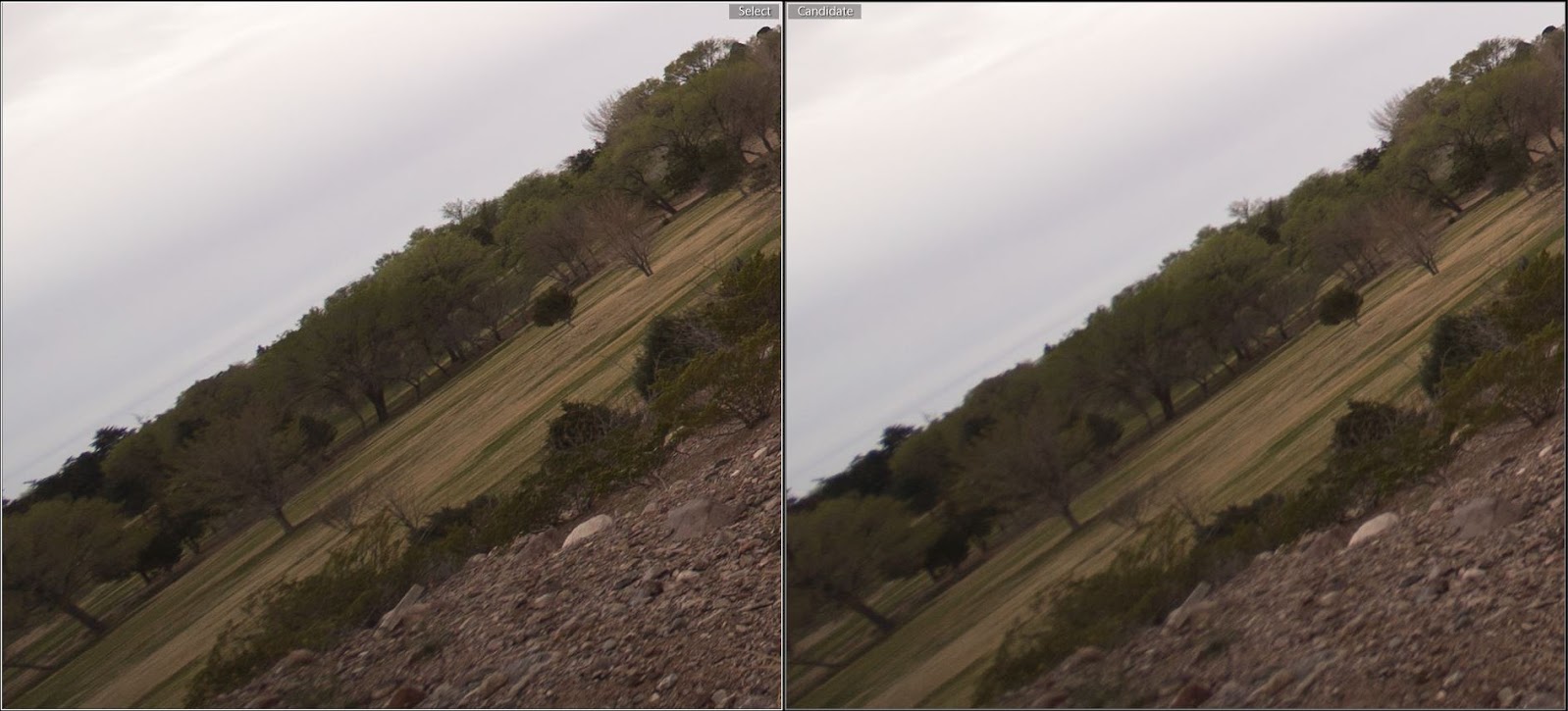
f/4.0
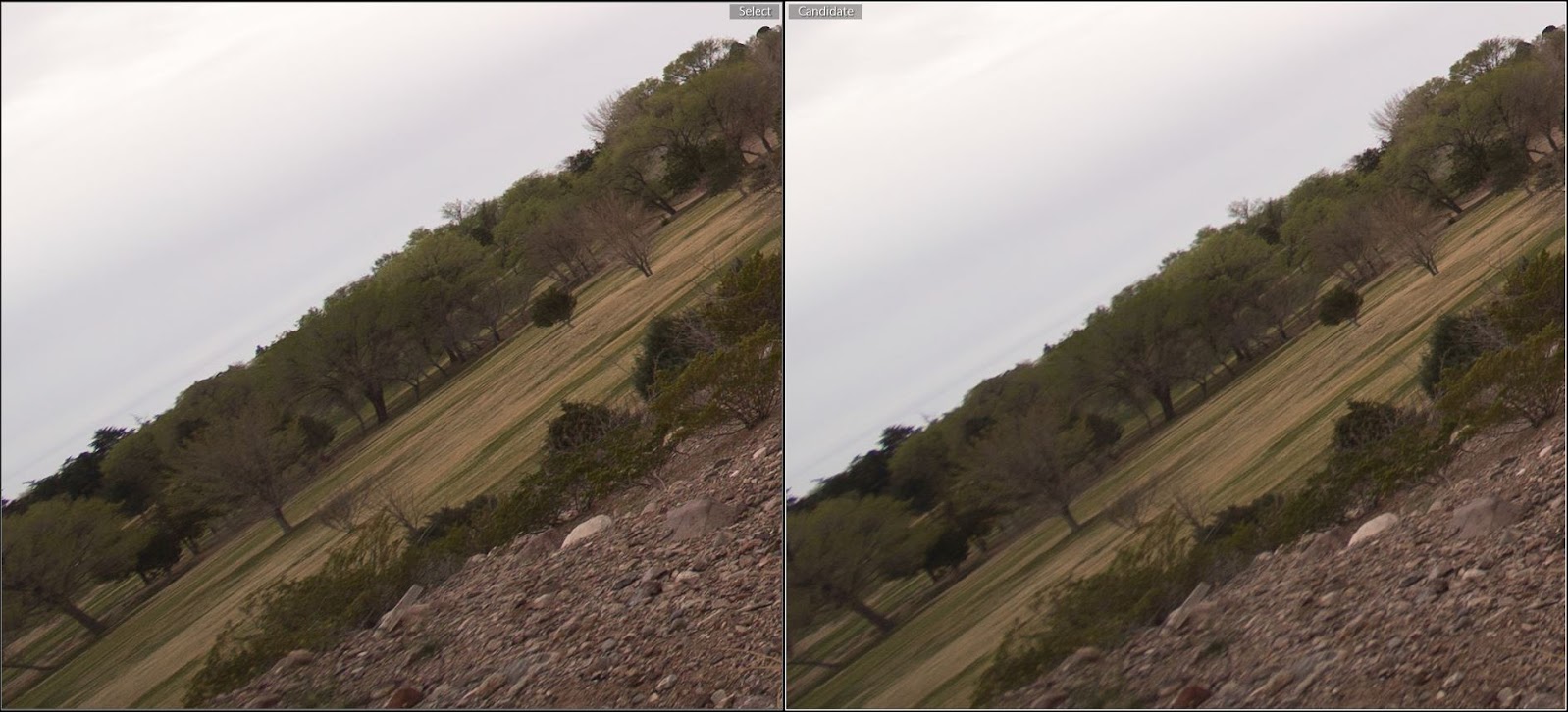
f/5.6
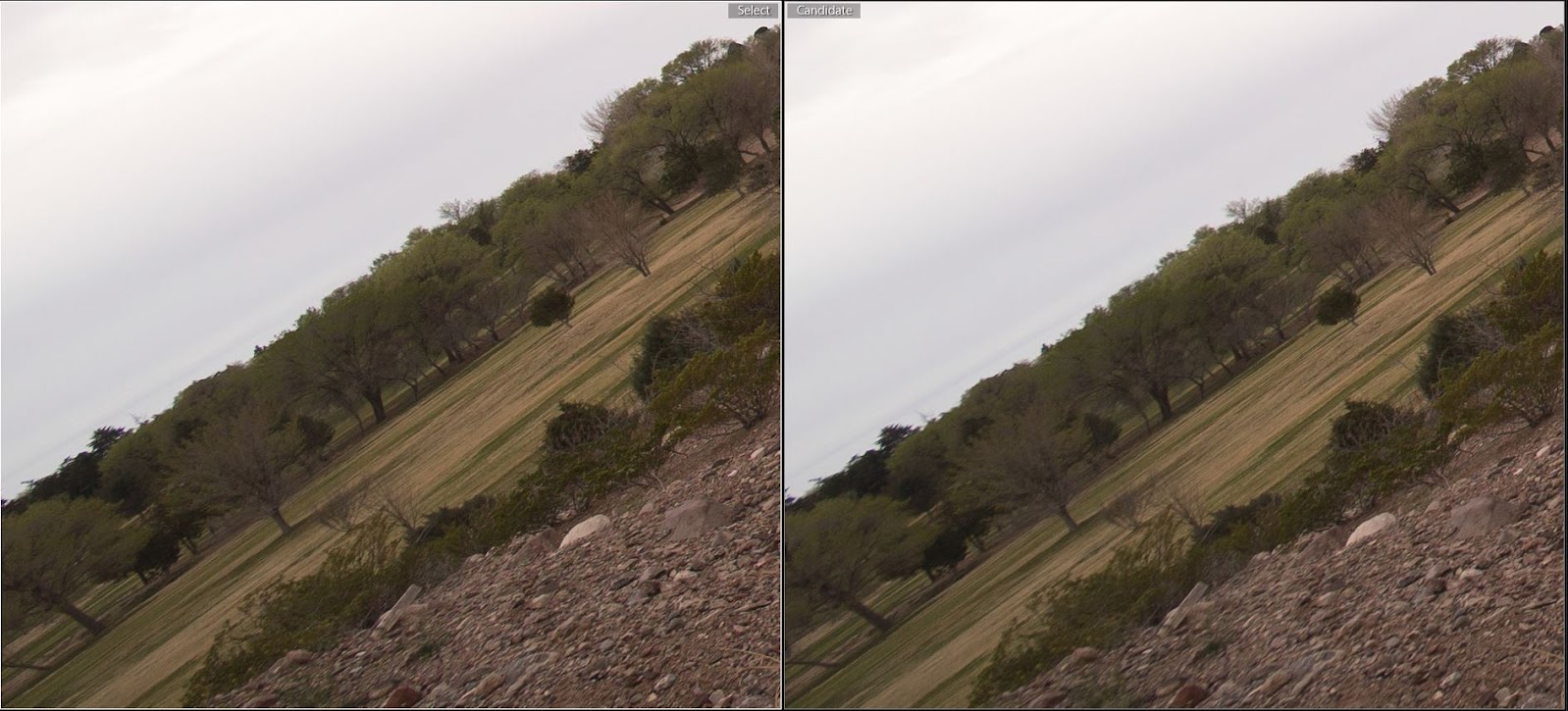
f/8.0

My own conclusions: The KolariVision mod helps tremendously. It greatly reduces not only the field curvature, but also the astigmatism. By doing so, it increases the effective DOF that the lens has. As seen from the results above, I can happily shoot at f/5.6 by simply focusing at the corners/edges. The center, by then, is identical. I doubt M9 and M240 users could do better than this, at least on the ZM 15. Below is the link to the full-res version. Again, you can tell these two cameras apart by their WB (cyan-normal, magenta-modded). There are ten pictures for each cam; the first 5 are center-focus, and the last 5 are corner-focus. I also include an aperture series I took with the Samyang 14 (a copy with the least de-centering out of 6 copies I have tried). In the center, the Samyang needs to stop down to f/5.6 or f/8 to match what the Zeiss can do at WO. In the corners, they match at WO, but the Zeiss pulls ahead after that with the optimization. I didn't optimize for the Samyang shot.
ZM15 Aperture Series
Samyang Aperture Series |
|
| Back to top |
|
 |
hiepphotog
Joined: 09 Sep 2010
Posts: 30
|
 Posted: Sat Mar 21, 2015 4:16 pm Post subject: Posted: Sat Mar 21, 2015 4:16 pm Post subject: |
 |
|
hiepphotog wrote:
I'm surprised that no one here has shown any interest so far considering most are using manual, legacy lenses. Nonetheless, this mod not only works with UWA but also with legacy telephoto. I attached here the full-res comparison on the Sonnar G 90. The crop I'm showing is at WO, and as you can see, it goes from acceptable sharp with loss in contrast to full-on moire-induced sharpness.
Here is the corner at WO: (left - normal, right -modded)

Full-res Sonnar G 90: http://www.dropbox.com/s/9ti33a0k2nckqng/Contax%20G%2090%20BA.rar?dl=0
Even on SLR lenses, I see reduction in veiling haze and PF. Preliminary test shows reduction in field curvature too. So better performance all around. A center crop at f/1.2 on the Contax 55
Left - normal, right -modded
 |
|
| Back to top |
|
 |
hiepphotog
Joined: 09 Sep 2010
Posts: 30
|
 Posted: Sat Mar 21, 2015 6:38 pm Post subject: Posted: Sat Mar 21, 2015 6:38 pm Post subject: |
 |
|
hiepphotog wrote:
I think this would interest some of you here. This is with the Contax Biogon G 21:
The Biogon G 21 is a tricky, yet lovely little lens. But I think I finally manage to squeeze the most out of this lens  . However, I would like to stretch the importance of getting the infinity focus spot-on. When I did the test this morning, my infinity is a little off and I couldn't manage to get a satisfactory result (to be honest, was thinking of selling the lens). However, being curious and quite in love with this lens, I decided to run the test again with infinity adjustment. My G21 was already converted to M-mount with distance scale by Hawk. Using Hawk's M adapter, I got the exact infinity point. . However, I would like to stretch the importance of getting the infinity focus spot-on. When I did the test this morning, my infinity is a little off and I couldn't manage to get a satisfactory result (to be honest, was thinking of selling the lens). However, being curious and quite in love with this lens, I decided to run the test again with infinity adjustment. My G21 was already converted to M-mount with distance scale by Hawk. Using Hawk's M adapter, I got the exact infinity point.
Since this lens's performance so far has been unknown on digital body, I would like to present here the aperture series taken with this. This lens does require a bit more optimization to make it sing. After trial-and-error, here is what I got:
Center
Left - 2.8, right - 4

Left - 5.6, right - 8
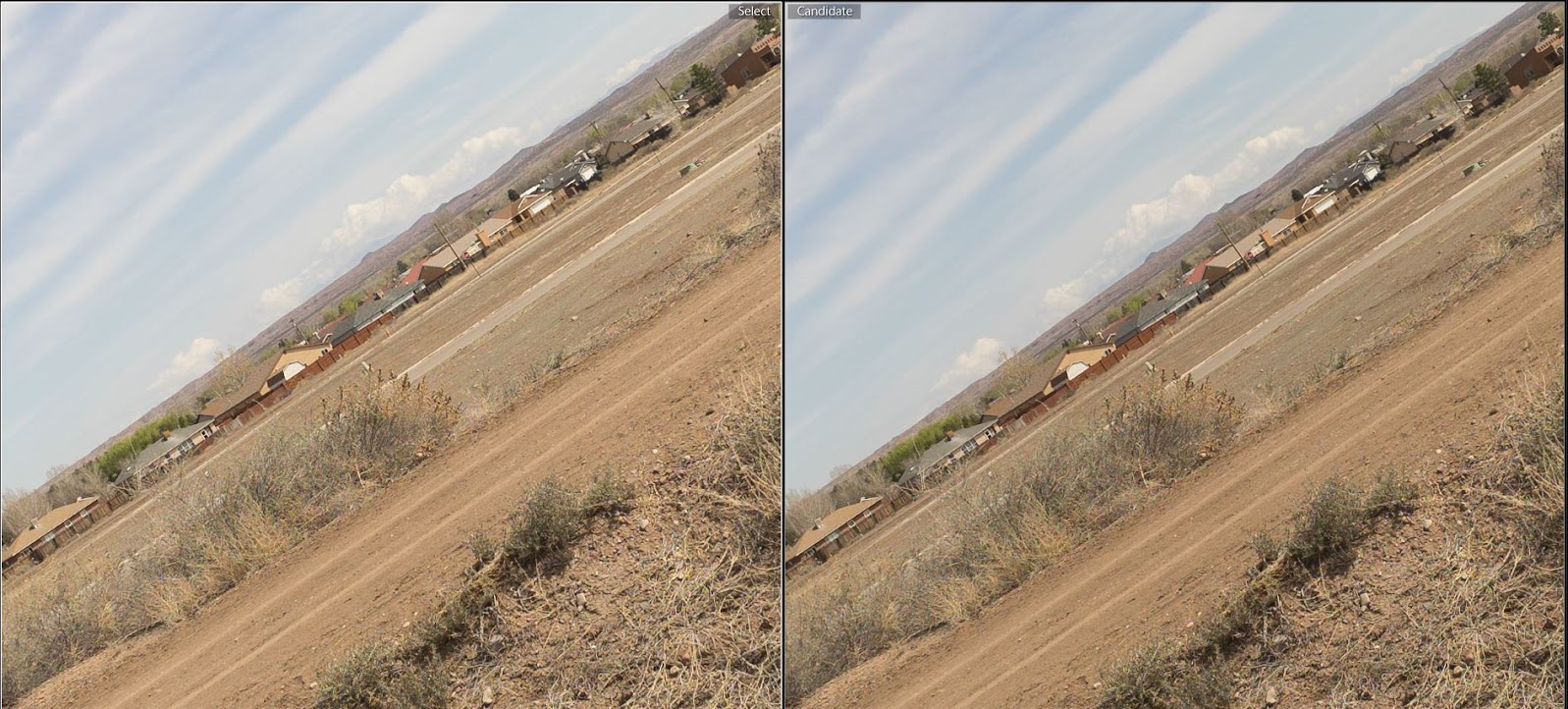
Left - 8, right - 11
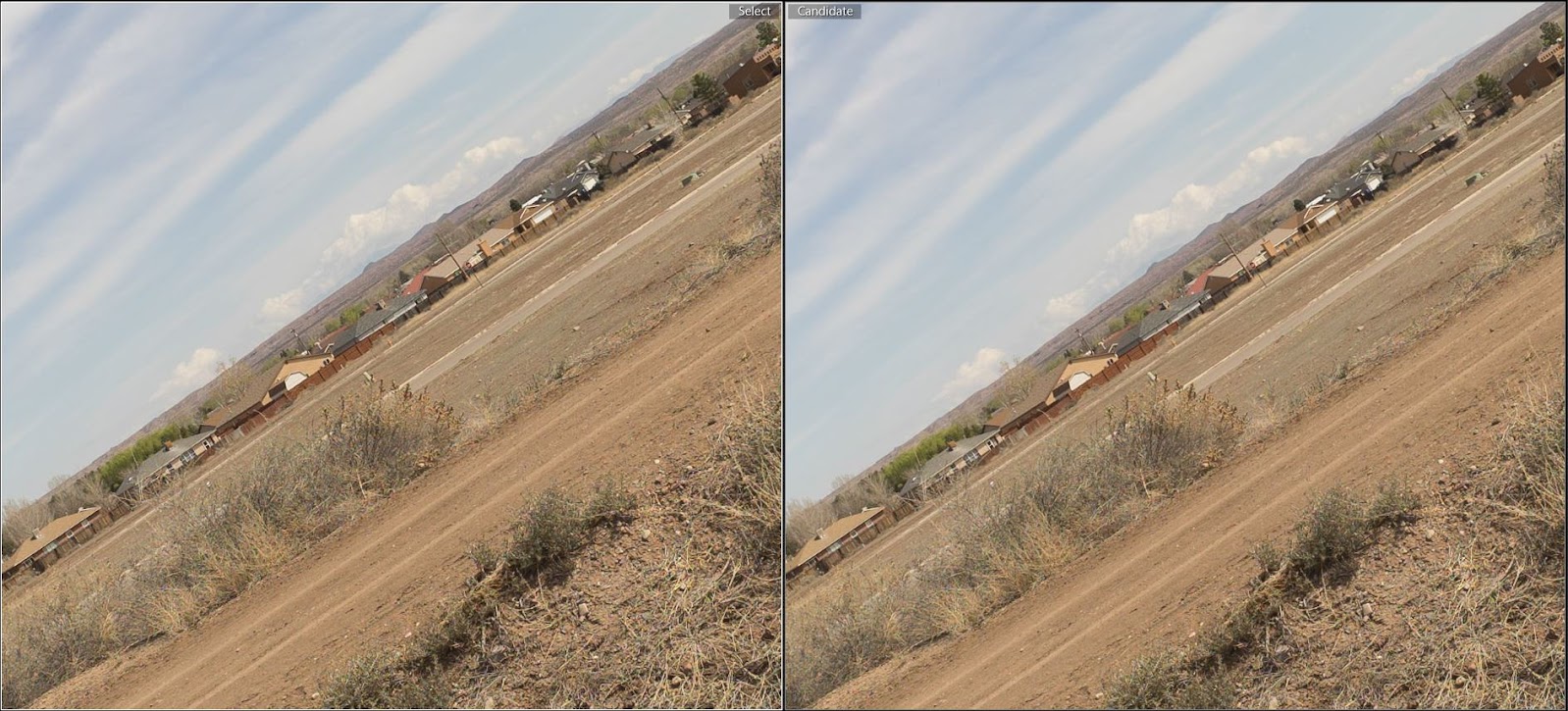
Corner:
Left - 2.8, right - 4
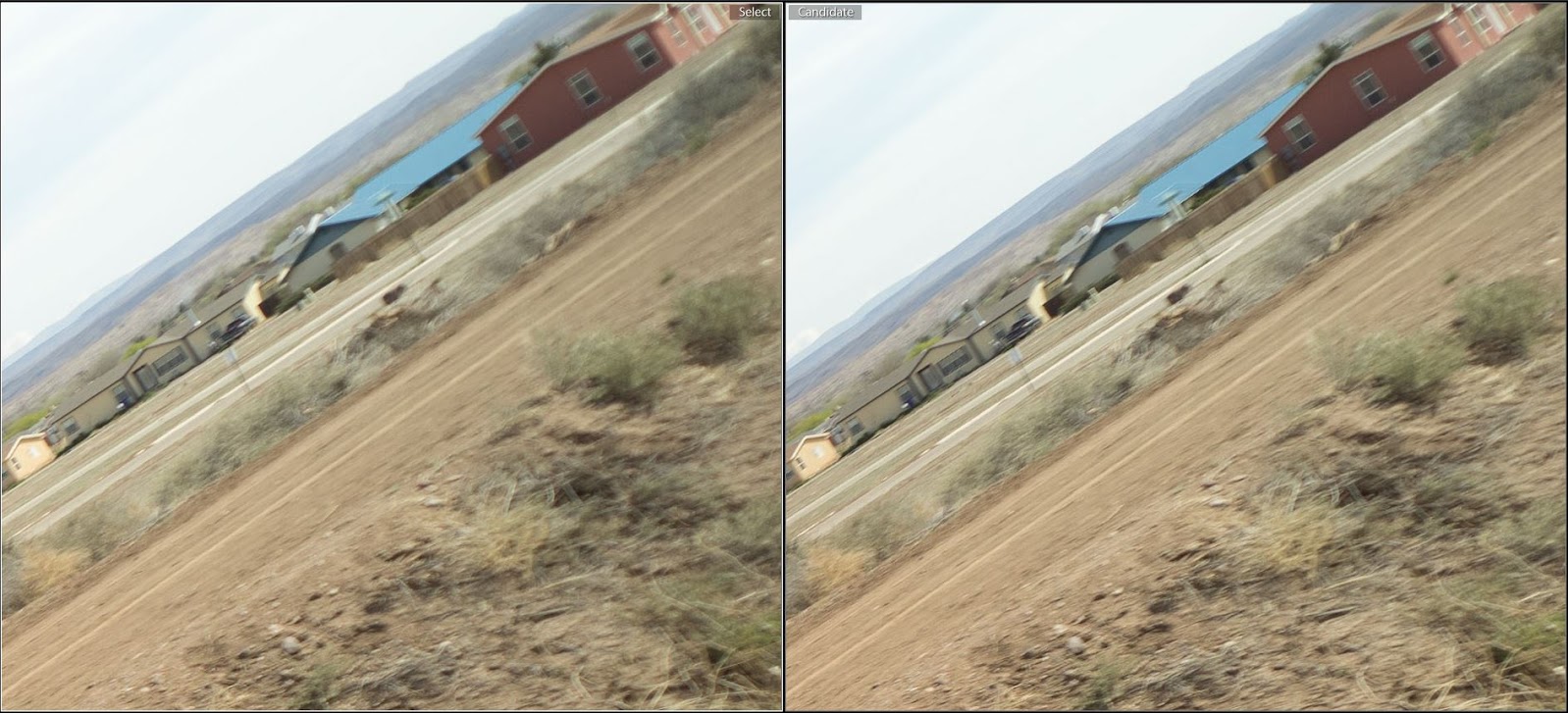
Left - 5.6, right - 8
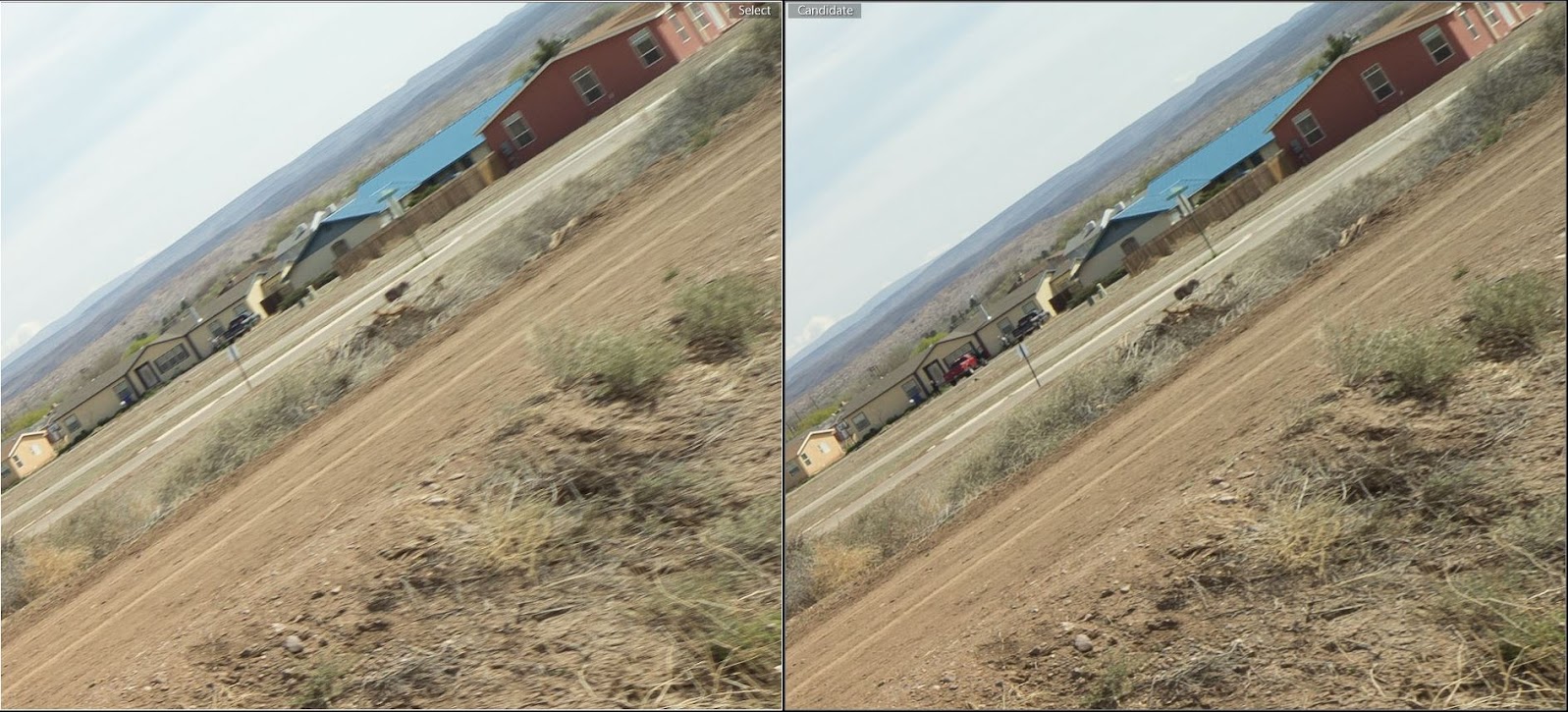
Left - 8, right - 11

So to get extremely sharp corner-to-corner, you need f/11. If you shoot at f/8, you have to deal with that soft extreme corners  (about 3% of the entire frame). f/5.6 is okay, but certainly f/2.8 and f/4 are totally garbage for any landscape work (who would shoot a landscape at these apertures anyway). Attached below is the full-res rar: (about 3% of the entire frame). f/5.6 is okay, but certainly f/2.8 and f/4 are totally garbage for any landscape work (who would shoot a landscape at these apertures anyway). Attached below is the full-res rar:
Contax Biogon G 21 Aperture Series |
|
| Back to top |
|
 |
calvin83


Joined: 12 Apr 2009
Posts: 7554
Location: Hong Kong
|
 Posted: Sun Mar 22, 2015 3:52 am Post subject: Posted: Sun Mar 22, 2015 3:52 am Post subject: |
 |
|
calvin83 wrote:
The result looks pretty promising to me. The A7s is the most demanding camera on the series for a thinner sensor stack. In fact, M4/3 camera should be benefit need this conversion too as the sensor stack is too thick(~4mm).
_________________
https://lensfever.com/
https://www.instagram.com/_lens_fever/
The best lens is the one you have with you. |
|
| Back to top |
|
 |
kds315*


Joined: 12 Mar 2008
Posts: 16544
Location: Weinheim, Germany
Expire: 2021-03-09
|
 Posted: Sun Mar 22, 2015 9:29 am Post subject: Posted: Sun Mar 22, 2015 9:29 am Post subject: |
 |
|
kds315* wrote:
| calvin83 wrote: |
| The result looks pretty promising to me. The A7s is the most demanding camera on the series for a thinner sensor stack. In fact, M4/3 camera should be benefit need this conversion too as the sensor stack is too thick(~4mm). |
Yes, I know that very well, but there isn't enough sensor shift possible inside to compensate for lack of infinity; 2mm is doable tho 
_________________
Klaus - Admin
"S'il vient a point, me souviendra" [Thomas Bohier (1460-1523)]
http://www.macrolenses.de for macro and special lens info
http://www.pbase.com/kds315/uv_photos for UV Images and lens/filter info
https://www.flickr.com/photos/kds315/albums my albums using various lenses
http://photographyoftheinvisibleworld.blogspot.com/ my UV BLOG
http://www.travelmeetsfood.com/blog Food + Travel BLOG
https://galeriafotografia.com Architecture + Drone photography
Currently most FAV lens(es):
X80QF f3.2/80mm
Hypergon f11/26mm
ELCAN UV f5.6/52mm
Zeiss UV-Planar f4/60mm
Zeiss UV-Planar f2/62mm
Lomo Уфар-12 f2.5/41mm
Lomo Зуфар-2 f4.0/350mm
Lomo ZIKAR-1A f1.2/100mm
Nikon UV Nikkor f4.5/105mm
Zeiss UV-Sonnar f4.3/105mm
CERCO UV-VIS-NIR f1.8/45mm
CERCO UV-VIS-NIR f4.1/94mm
CERCO UV-VIS-NIR f2.8/100mm
Steinheil Quarzobjektiv f1.8/50mm
Pentax Quartz Takumar f3.5/85mm
Carl Zeiss Jena UV-Objektiv f4/60mm
NYE OPTICAL Lyman-Alpha II f1.1/90mm
NYE OPTICAL Lyman-Alpha I f2.8/200mm
COASTAL OPTICS f4/60mm UV-VIS-IR Apo
COASTAL OPTICS f4.5/105mm UV-Micro-Apo
Pentax Ultra-Achromatic Takumar f4.5/85mm
Pentax Ultra-Achromatic Takumar f5.6/300mm
Rodenstock UV-Rodagon f5.6/60mm + 105mm + 150mm
|
|
| Back to top |
|
 |
hiepphotog
Joined: 09 Sep 2010
Posts: 30
|
 Posted: Sun Mar 22, 2015 2:35 pm Post subject: Posted: Sun Mar 22, 2015 2:35 pm Post subject: |
 |
|
hiepphotog wrote:
| kds315* wrote: |
| calvin83 wrote: |
| The result looks pretty promising to me. The A7s is the most demanding camera on the series for a thinner sensor stack. In fact, M4/3 camera should be benefit need this conversion too as the sensor stack is too thick(~4mm). |
Yes, I know that very well, but there isn't enough sensor shift possible inside to compensate for lack of infinity; 2mm is doable tho  |
But why would you want to modify a m43 camera? It can't take full advantage of the lens, and with the Speed Booster, the thickness has already been taken into account. More FF mirrorless options would inevitably arrive in the near future. The one that can take the full advantage (or nearly so) of our lenses would be most welcomed. Focus directly on different points on the frame to achieve maximum performance is already quite difficult for a digital RF camera. |
|
| Back to top |
|
 |
calvin83


Joined: 12 Apr 2009
Posts: 7554
Location: Hong Kong
|
 Posted: Sun Mar 22, 2015 2:58 pm Post subject: Posted: Sun Mar 22, 2015 2:58 pm Post subject: |
 |
|
calvin83 wrote:
| hiepphotog wrote: |
| kds315* wrote: |
| calvin83 wrote: |
| The result looks pretty promising to me. The A7s is the most demanding camera on the series for a thinner sensor stack. In fact, M4/3 camera should be benefit need this conversion too as the sensor stack is too thick(~4mm). |
Yes, I know that very well, but there isn't enough sensor shift possible inside to compensate for lack of infinity; 2mm is doable tho  |
But why would you want to modify a m43 camera? It can't take full advantage of the lens, and with the Speed Booster, the thickness has already been taken into account. More FF mirrorless options would inevitably arrive in the near future. The one that can take the full advantage (or nearly so) of our lenses would be most welcomed. Focus directly on different points on the frame to achieve maximum performance is already quite difficult for a digital RF camera. |
There are some lenses for small formats such as C mount lenses made for 16mm cine camera. Similar to LTM lenses, these lenses have short exit pupil distance to the camera sensor. They will be benefit from a thinner sensor stack to achieve better performance in the edges/corners.
_________________
https://lensfever.com/
https://www.instagram.com/_lens_fever/
The best lens is the one you have with you. |
|
| Back to top |
|
 |
kds315*


Joined: 12 Mar 2008
Posts: 16544
Location: Weinheim, Germany
Expire: 2021-03-09
|
 Posted: Mon Mar 23, 2015 2:14 pm Post subject: Posted: Mon Mar 23, 2015 2:14 pm Post subject: |
 |
|
kds315* wrote:
| hiepphotog wrote: |
| kds315* wrote: |
| calvin83 wrote: |
| The result looks pretty promising to me. The A7s is the most demanding camera on the series for a thinner sensor stack. In fact, M4/3 camera should be benefit need this conversion too as the sensor stack is too thick(~4mm). |
Yes, I know that very well, but there isn't enough sensor shift possible inside to compensate for lack of infinity; 2mm is doable tho  |
But why would you want to modify a m43 camera? It can't take full advantage of the lens, and with the Speed Booster, the thickness has already been taken into account. More FF mirrorless options would inevitably arrive in the near future. The one that can take the full advantage (or nearly so) of our lenses would be most welcomed. Focus directly on different points on the frame to achieve maximum performance is already quite difficult for a digital RF camera. |
I do very different things with cameras than you do ... http://photographyoftheinvisibleworld.blogspot.com 
_________________
Klaus - Admin
"S'il vient a point, me souviendra" [Thomas Bohier (1460-1523)]
http://www.macrolenses.de for macro and special lens info
http://www.pbase.com/kds315/uv_photos for UV Images and lens/filter info
https://www.flickr.com/photos/kds315/albums my albums using various lenses
http://photographyoftheinvisibleworld.blogspot.com/ my UV BLOG
http://www.travelmeetsfood.com/blog Food + Travel BLOG
https://galeriafotografia.com Architecture + Drone photography
Currently most FAV lens(es):
X80QF f3.2/80mm
Hypergon f11/26mm
ELCAN UV f5.6/52mm
Zeiss UV-Planar f4/60mm
Zeiss UV-Planar f2/62mm
Lomo Уфар-12 f2.5/41mm
Lomo Зуфар-2 f4.0/350mm
Lomo ZIKAR-1A f1.2/100mm
Nikon UV Nikkor f4.5/105mm
Zeiss UV-Sonnar f4.3/105mm
CERCO UV-VIS-NIR f1.8/45mm
CERCO UV-VIS-NIR f4.1/94mm
CERCO UV-VIS-NIR f2.8/100mm
Steinheil Quarzobjektiv f1.8/50mm
Pentax Quartz Takumar f3.5/85mm
Carl Zeiss Jena UV-Objektiv f4/60mm
NYE OPTICAL Lyman-Alpha II f1.1/90mm
NYE OPTICAL Lyman-Alpha I f2.8/200mm
COASTAL OPTICS f4/60mm UV-VIS-IR Apo
COASTAL OPTICS f4.5/105mm UV-Micro-Apo
Pentax Ultra-Achromatic Takumar f4.5/85mm
Pentax Ultra-Achromatic Takumar f5.6/300mm
Rodenstock UV-Rodagon f5.6/60mm + 105mm + 150mm
|
|
| Back to top |
|
 |
hiepphotog
Joined: 09 Sep 2010
Posts: 30
|
 Posted: Mon Mar 23, 2015 9:07 pm Post subject: Posted: Mon Mar 23, 2015 9:07 pm Post subject: |
 |
|
hiepphotog wrote:
Valid points guys! So far though, doesn't seem there is much interest for this mod. |
|
| Back to top |
|
 |
pinholecam

Joined: 26 Nov 2012
Posts: 223
|
 Posted: Thu Jul 30, 2015 10:35 pm Post subject: Posted: Thu Jul 30, 2015 10:35 pm Post subject: |
 |
|
pinholecam wrote:
I'll just add a link to a running review that I'm doing here instead of starting another thread.
http://www.clubsnap.com/forums/showthread.php?t=1540662
Trying out the modded A7 on various SLR and RF lenses.
Just an example here :
CV15v1 (in fact, is it considered V0 since its marked "Cosina" in a silver body?)
All shots straight off the AWB of both cameras and in RAW processed in LR with the same settings.
No corrections done for the lens.
Full Image

A7 CV15v1 f8 by jenkwang, on Flickr
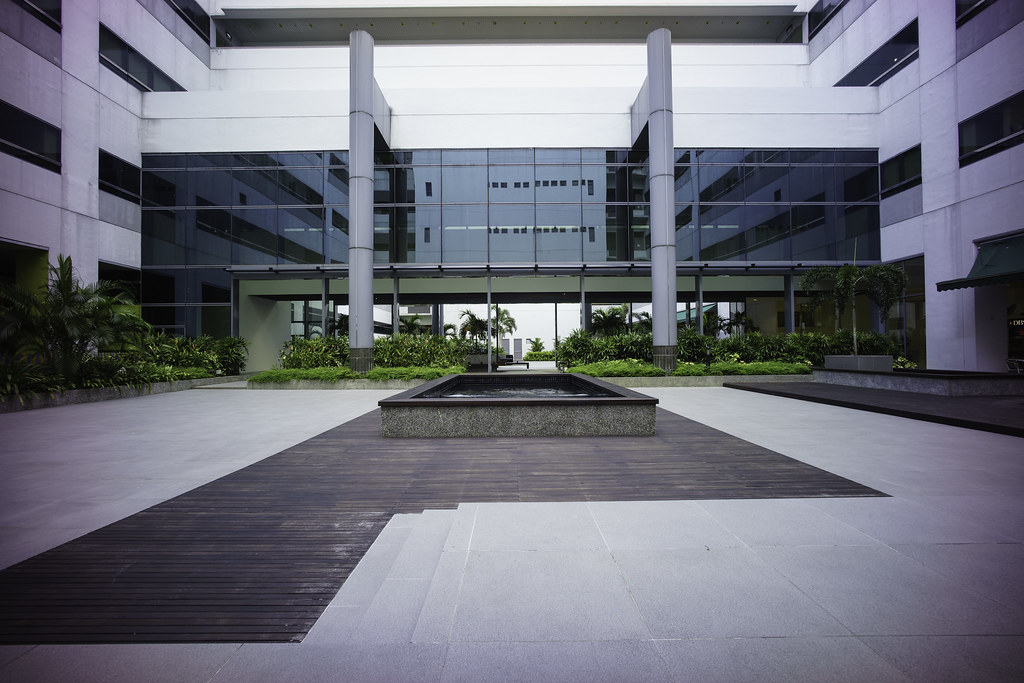 A7K CV15v1 f8 by jenkwang, on Flickr A7K CV15v1 f8 by jenkwang, on Flickr
Vignette and color cast to me is about the same.
Needs a correction in PP for both.
Center Crop

A7 CV15v1 f8-center by jenkwang, on Flickr
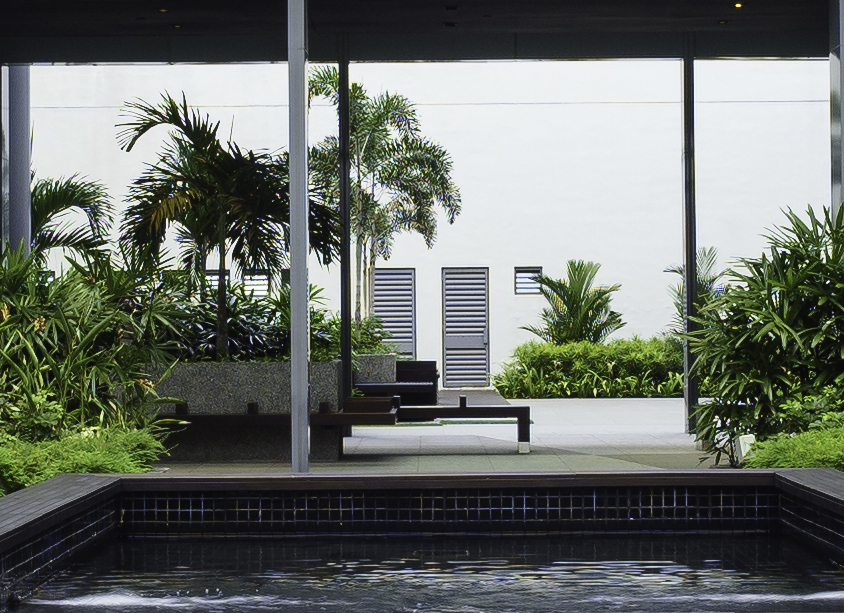
A7K CV15v1 f8 -center by jenkwang, on Flickr
Quite apparent difference for me.
Certainly sharper for the A7K.
A bit more 'bite' in the image with the better edge definition and a bit more texture detail.
Upper Left crop
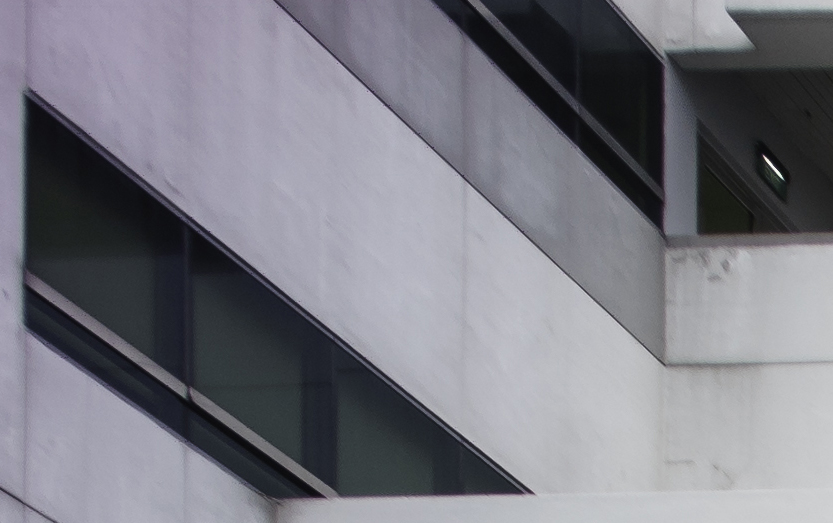
A7 CV15v1 f8-upper left by jenkwang, on Flickr
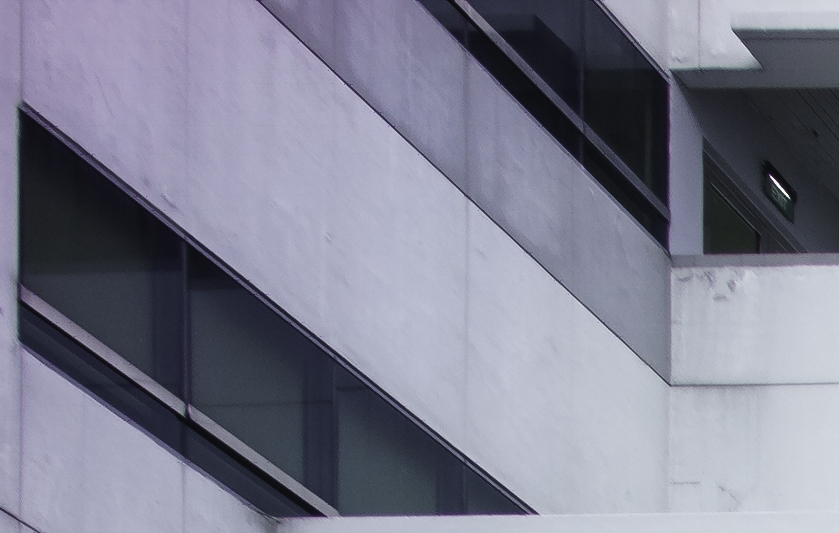
A7K CV15v1 f8 -upper left by jenkwang, on Flickr
Again clearer advantage to the A7K.
Notice that the text on the "EXIT" signage is more readable.
Better edge definition too.
Right Crop
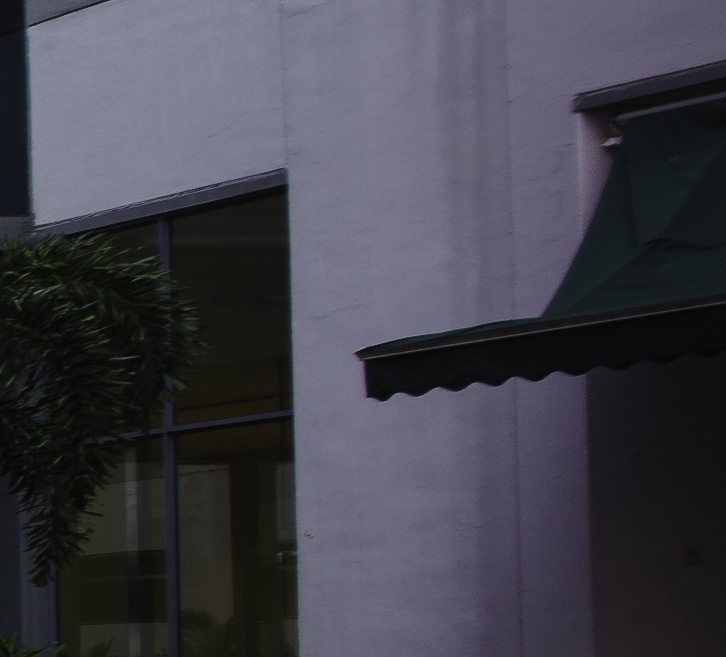
A7 CV15v1 f8-right by jenkwang, on Flickr

A7K CV15v1 f8 -right by jenkwang, on Flickr
Again much better on the A7K.
I wonder if I come across a cheap copy of the CV15v1/v2, should I get one.....
The color cast and vignette correction is just a click in LR with a stored correction template.
_________________
Flickr - https://flic.kr/s/aHsjYTLu26
APAD - http://bit.ly/1zv8ZMK |
|
| Back to top |
|
 |
cooltouch


Joined: 15 Jan 2009
Posts: 9097
Location: Houston, Texas
|
 Posted: Fri Jul 31, 2015 6:48 am Post subject: Posted: Fri Jul 31, 2015 6:48 am Post subject: |
 |
|
cooltouch wrote:
Interesting. I wonder if this would provide any improvement with ultrawides on a Sony NEX 7. Mine had dreadful performance with two different 17mm primes. Then I checked their performance on a 10.1mp APS-C Canon, and had the same awful results. Both lenses provide great images when I've used them with film cameras, however.
_________________
Michael
My Gear List: http://michaelmcbroom.com/photo/gear.html
My Gallery: http://michaelmcbroom.com/gallery3/index.php/
My Flickr Page: https://www.flickr.com/photos/11308754@N08/albums
My Music: https://soundcloud.com/michaelmcbroom/albums
My Blog: http://michaelmcbroom.com/blogistan/ |
|
| Back to top |
|
 |
tromboads


Joined: 29 May 2012
Posts: 1782
Location: Melbourne AU
Expire: 2015-10-01
|
 Posted: Fri Jul 31, 2015 10:36 am Post subject: Posted: Fri Jul 31, 2015 10:36 am Post subject: |
 |
|
tromboads wrote:
a) wish I could spend $1k+ on a camera
b) wish I could spent $1k+ on lenses  |
|
| Back to top |
|
 |
std


Joined: 09 Feb 2010
Posts: 1827
Location: Bulgaria
|
 Posted: Fri Jul 31, 2015 10:46 am Post subject: Posted: Fri Jul 31, 2015 10:46 am Post subject: |
 |
|
std wrote:
Nex 7 is worse than Nex 5n - it shows more vignetting and color shift towards the edges.
Unfortunately even modified A7 will still not looking good enough, and also the white balance gets off.
_________________
Stefan
My lens list:
SLR MD: Rokkor 1,7/50 Exakta: Kilfitt-Makro-Kilar E 3.5/4cm; CZJ 2/50 Pancolar;M42: CZJ 2.8/50 Tessar; Mir-1B 2.8/37; Jupiter-9 2/85 T-mount: Tamron 5.9/200; Tamron 6.9/300; Tamron 7.5/400 C-mount: Cosmicar 1.8/50 Y/S: Sun 3.5/38-90, Sun 4/70-210 RF Contax RF: Jupiter-8 2/50; Contax G:CZ 2,8/21 Biogon T; CZ 2,8/28 Biogon T; CZ 2/35 Planar T; CZ 2/45 Planar T; CZ 2,8/90 Sonnar T |
|
| Back to top |
|
 |
pinholecam

Joined: 26 Nov 2012
Posts: 223
|
 Posted: Sat Aug 01, 2015 11:36 pm Post subject: Posted: Sat Aug 01, 2015 11:36 pm Post subject: |
 |
|
pinholecam wrote:
| cooltouch wrote: |
| Interesting. I wonder if this would provide any improvement with ultrawides on a Sony NEX 7. Mine had dreadful performance with two different 17mm primes. Then I checked their performance on a 10.1mp APS-C Canon, and had the same awful results. Both lenses provide great images when I've used them with film cameras, however. |
Perhaps you can email Kolari to get a better answer.
I've read the comment that the NEX7 had a sensor stack thickness of 2.5mm vs the 1.5mm of a NEX, though I don't know how accurate this comment is.
IMHO, if you are going to spend that $400 anyway, then just get a 2nd hand A7 and get it done with a FF.
At least there will be an option to crop off a bit to get a 1.1, 1.3 crop if necessary and ignore extreme edges/corners.
_________________
Flickr - https://flic.kr/s/aHsjYTLu26
APAD - http://bit.ly/1zv8ZMK |
|
| Back to top |
|
 |
|
|
|
You cannot post new topics in this forum
You cannot reply to topics in this forum
You cannot edit your posts in this forum
You cannot delete your posts in this forum
You cannot vote in polls in this forum
|
